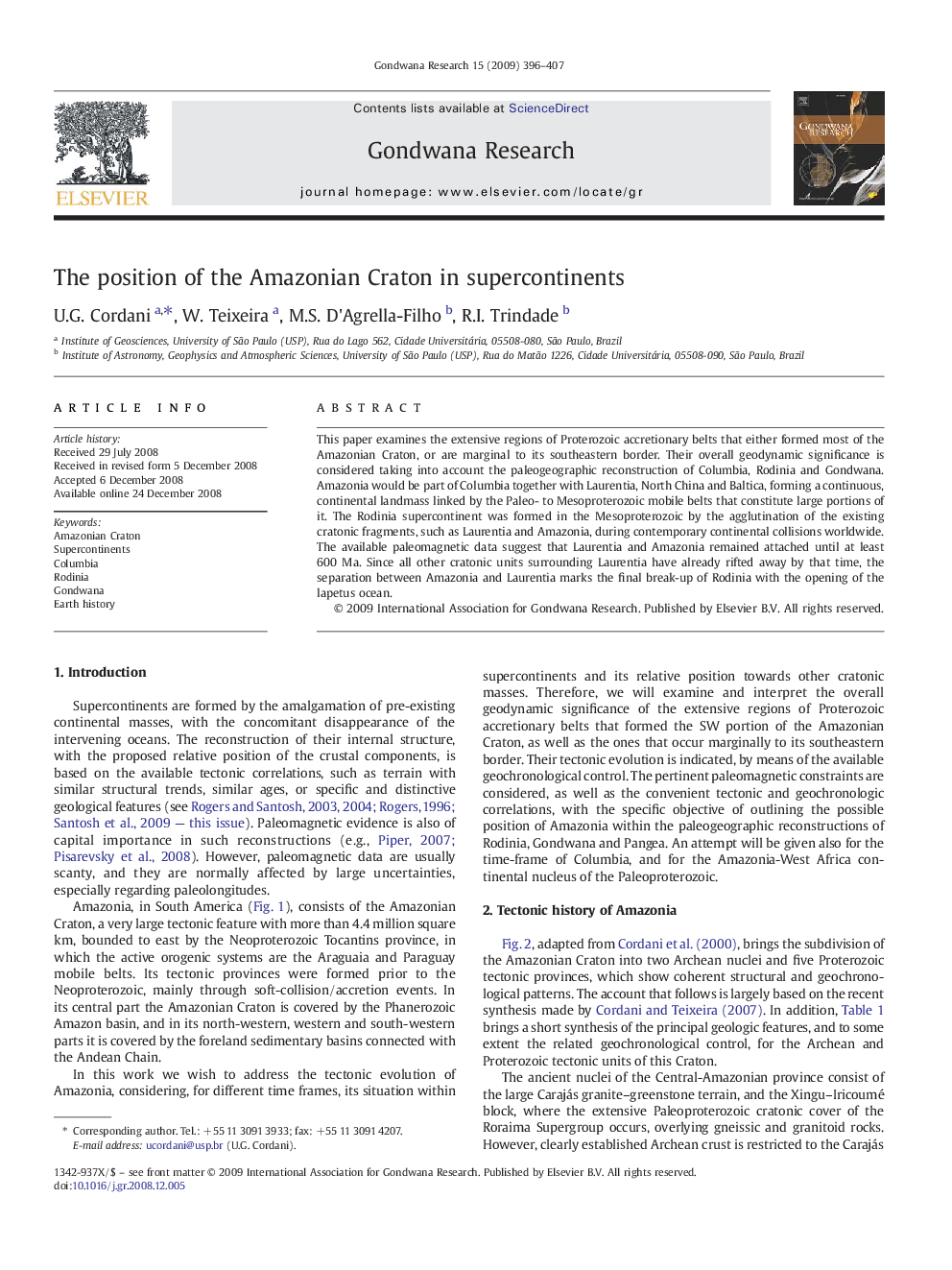| Article ID | Journal | Published Year | Pages | File Type |
|---|---|---|---|---|
| 4727368 | Gondwana Research | 2009 | 12 Pages |
This paper examines the extensive regions of Proterozoic accretionary belts that either formed most of the Amazonian Craton, or are marginal to its southeastern border. Their overall geodynamic significance is considered taking into account the paleogeographic reconstruction of Columbia, Rodinia and Gondwana. Amazonia would be part of Columbia together with Laurentia, North China and Baltica, forming a continuous, continental landmass linked by the Paleo- to Mesoproterozoic mobile belts that constitute large portions of it. The Rodinia supercontinent was formed in the Mesoproterozoic by the agglutination of the existing cratonic fragments, such as Laurentia and Amazonia, during contemporary continental collisions worldwide. The available paleomagnetic data suggest that Laurentia and Amazonia remained attached until at least 600 Ma. Since all other cratonic units surrounding Laurentia have already rifted away by that time, the separation between Amazonia and Laurentia marks the final break-up of Rodinia with the opening of the lapetus ocean.
